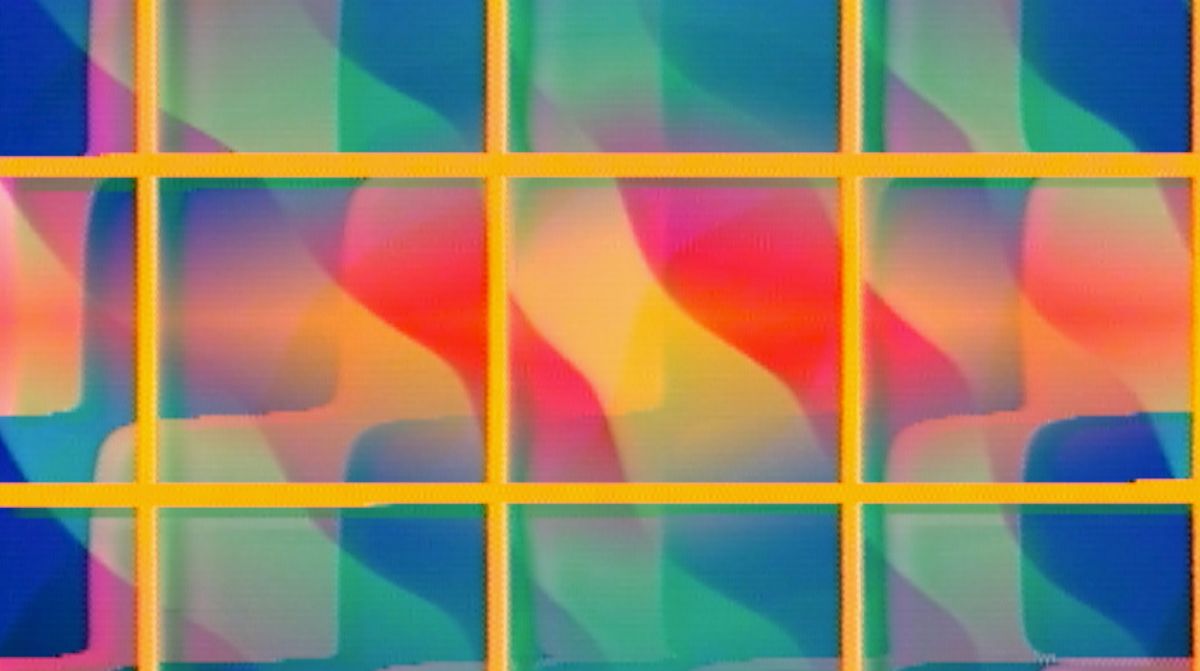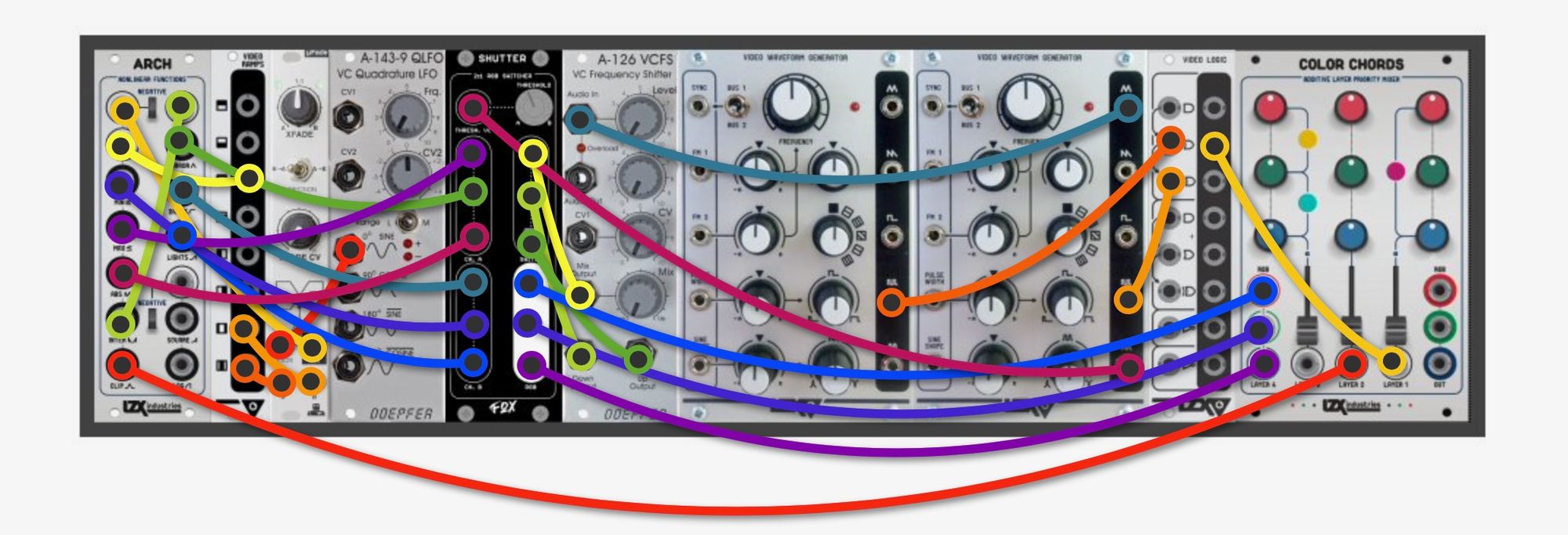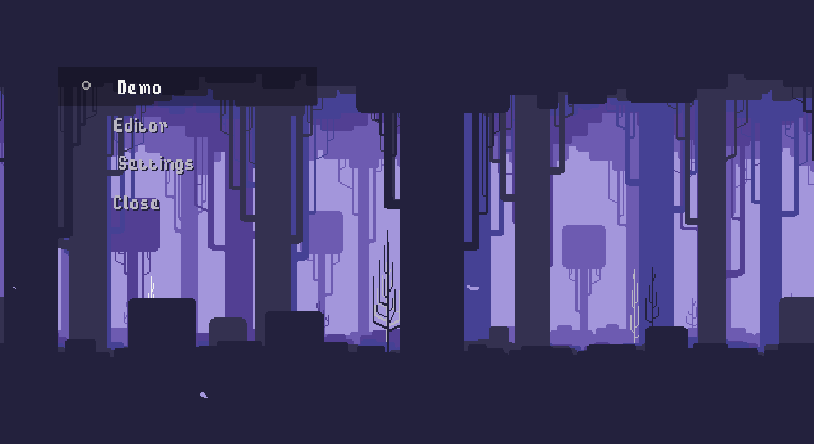Patch Breakdown: Parallax

After posting this patch, I had some requests for some patch details, so let's do it:
Firstly, the patch in motion:
The Patch

There are three main elements to this patch: A morphing diamond, a scrolling shingle background, and a windowpane foreground. Let's take it piece by piece.
Morphing Diamond
This is a very subtle element in the end patch, but it's a core component that other elements are based off of. It's pretty simple really: I'm taking the two vertical centered ramps and crossfading between them in an Intellijel μFade.
I've had the μFade for a long time, originating in my audio modular system. Audio modules can be a tossup with video signals, but Intellijel has such high quality engineering that the signal paths are super, super clean. The module is unfortunately discontinued at this point, but keep an eye out on the used market if you need a solid crossfader.
The crossfade is being smoothly controlled by a sine LFO from a Doepfer A-143-9. This simple crossfade is providing a lot of the motion in the resulting patch.
The post-μFade signal is fed into an LZX Arch and mixed in the analog logic section with a static horizontal centered ramp. The Clip output is then fed directly into the Color Chords for final mixing and colorizing.
Scrolling Shingle
The Foxing Hour Shutter is the main engine of this subpatch. If you're not familiar with this module, it's a video switcher/compositor that allows for each RGB channel to be switched individually with up to video rate modulations.
The components that are being switched in the Shutter are all variations coming out of the Arch. In order to get enough inputs, the Intersection Output is fed into the Rectifier section for three more outputs. For variety, I alternated what was going into the Shutter, but it's fairly random.
The Switch inputs on the Shutter are being modulated by the three outputs of a Doepfer A-126 Frequency Shifter. These modulators are what give this patch the diagonal wave element. The A-126 is being "clocked" here with a LZX Video Waveform Generator Triangle Output. This VWG is locked to vertical bars. The Threshold VC Input on the Shutter is also being modulated by the VWG, but using the Sine Output. The benefit of using the Sine output is that it has a shaper control. Turning this knob controls the amount of overlap of the "shingles".
The outputs of the Shutter go directly into the Layer 4 input on the Color Chords.
Windowpane Foreground
We're going to re-use the vertical VWG here. We'll take the PWM Output and combine it with another VWG that is free-running at horizontal rates in an LZX Video Logic. Adjust the PWM rate on each oscillator to thin out the lines to taste. Take the Or Output of the Video Logic and plug it directly into Layer 1 of the Color Chords. Boom. Windowpane.
Okay, there's one "trick" going on here. The patch is rotated 90° in post. It's easier to get scrolling horizontal lines out of a VWG than it is scrolling vertical lines. It's a technique I end up using often because I always rotate my videos for 9:16 for posting.
Parallax
Just to all the way up, let's talk about parallax as a concept. Parallax is a feature of optics where a stationary object appears to change position based on viewing it from two different locations. This is used extensively in 2D side-scrolling video games to give a sense of depth with layers of flat elements. The key to pulling off this feature is to have the background element scroll slower than the elements that come in front of it, with the element in front scrolling the fastest. Like so:

Okay, that out of the way, there are two things in the patch that control the parallax depth: the frequency of the horizontal oscillator which controls the windowpane speed and the frequency shifter speed, which contains the background shingle scrolling speed. Tweak those two settings until you end up with an effect that suits you.